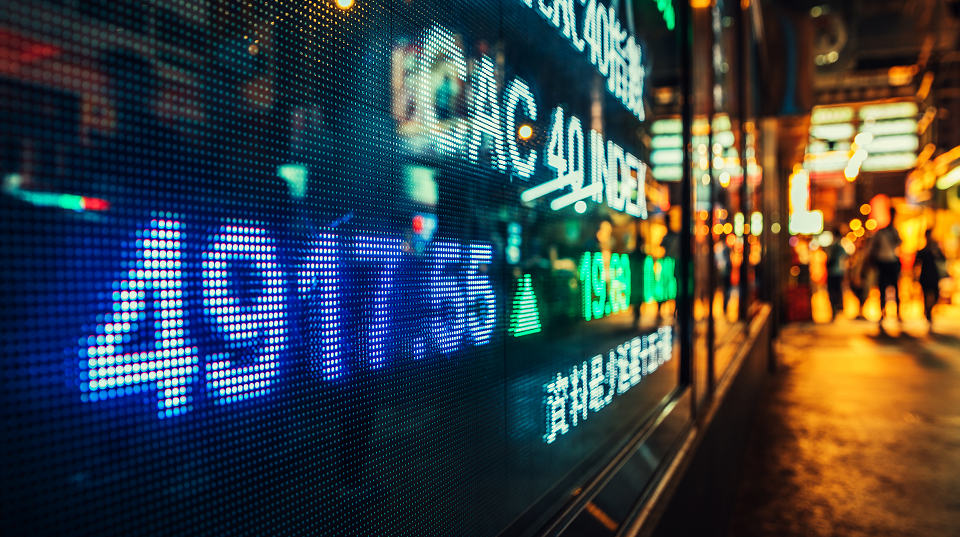by Kathy Jones, Senior Vice President, Chief Fixed Income Strategist, Schwab Center for Financial Research
John Maynard Keynes famously said, “When the facts change, I change my mind.” We believe that’s a good maxim for strategists to live by. So here we are just one month into the year, and we’re already changing our minds about the outlook for the bond market in 2020.
To review, we came into the year expecting a modest increase in bond yields due to the lagged impact of the Federal Reserve’s three rate cuts in 2019, improving momentum in global economic growth, and easing trade tensions.
Our expectation was that the Fed would keep short-term rates anchored near 1.5% while 10-year Treasury yields drifted up to the 2.25% to 2.5% region. The idea was that as economic prospects improved, the yield curve would steepen. Putting a fine point on it, we thought that yields would peak in the first half of the year and move somewhat lower in the second half.
The coronavirus virus outbreak that emerged in China and has spread globally has made that scenario look unlikely. So, when the facts change, we have to change our minds. Our current view is that 10-year Treasury yields are likely to stay under 2% this year. Also, the timeline is likely to be reversed from our original expectations, with yields hitting the lows in the first half of the year and potentially drifting higher in the second half.
Why coronavirus matters
You might wonder why we’d change the outlook so soon. After all, history tells us that market reactions to other viral epidemics—Ebola, SARS, Zika, etc.—didn’t last long and the impact on markets was fleeting. Losses were recouped within a month or two once it was clear that infection rates had peaked and the worst was over.
While some markets may rebound quickly, we doubt that interest rates will return to previous levels. The negative economic impact is likely to mean slower global growth and easier central bank policies. With China’s industrial heartland at the center of the epidemic, the ripple effects may be larger and longer-lasting than in previous similar events. China is much more intertwined with the global economy than it was in 2003 during the SARS outbreak. Tens of millions of people have been quarantined, the Lunar New Year holiday has been extended in many areas, schools are closed, and travel is sharply curtailed for millions of people.
China now accounts for a much larger share of global supply and demand than in the past. It is effectively the world’s factory floor, accounting for 35% of global manufacturing output. Chinese consumption also plays a much larger role in driving demand for commodities, such as oil and industrial metals, than it did in 2003. On the service side, China’s tourism alone has doubled as a percentage of total world tourism in the past 10 years. Early estimates indicate that the coronavirus and its aftermath will subtract 0.2% to 0.4% from world gross domestic product (GDP) growth this year. That’s a pretty substantial amount, given that the International Monetary Fund has estimated global GDP growth at only 3.3% for 2020.
The price of oil has dropped to its lowest level since early October 2019
Source: Bloomberg, using daily data as of 1/27/2020. Generic 1st Crude Oil, WTI (CL1 COMB Comdty).
Past performance is no guarantee of future results.
Ten-year Treasury yields fell back to last fall’s low of 1.5%, and 30-year bond yields have slipped below 2%. While yields have rebounded, they have not reached the level seen prior to the news of the coronavirus.
Coronavirus fears sent the 10-year Treasury yield plummeting
Source: Bloomberg. Daily data as of 2/5/2020. Past performance is no guarantee of future results.
Other Asian economies like Hong Kong, Singapore and Japan will likely bear the brunt of it, but Europe will also be affected by the slowdown in business activity, since China is a major trading partner in manufactured goods. The U.S. is a more closed economy, so the impact domestically should be less. In the U.S. there are two channels through which the impact could be felt—supply chain disruptions and direct trade. Companies like Apple have had to shutter facilities and Starbucks are closing stores in China—actions that will affect first-quarter earnings. In terms of direct trade, doubts are already rising that China will meet the commodity-purchase pledges it made in the “phase-one” trade deal.
At 1.5% the yield on the 10-year Treasury is signaling expectations of a significant slowdown in the economy. That is probably an overreaction, but climbing back up to 2% is likely to be difficult after experiencing a blow to the global economy.
What will the Fed do and when will it do it?
Policy makers react to changes in the economic outlook. In turn, markets react to policy changes. Currently, markets are counting on a swift and sizable reaction. China has already announced a series of measures to support its economy, including pumping cash into money markets to help provide liquidity, and easing lending conditions to cushion the economic blow. In Europe, yields have fallen more steeply into negative territory and there is some chatter about fiscal and/or monetary stimulus coming down the road.
Back in the U.S., markets are discounting two rate cuts by the Fed this year, for a total of 50 basis points, and the yield curve has inverted again. The “dip” in the yield curve has pushed Treasury yields with maturities of up to 10 years below the federal funds rate—a sign that the markets believe Fed policy is too tight. That’s a big change from where yields were just a month ago.
The dip in the belly of the yield curve indicates that the markets are pricing in additional Fed easing
Source: Bloomberg, data as of 1/31/2019 and 1/31/2020. Past performance is no guarantee of future results.
Because other Group of Seven central banks have limited scope for easing, all eyes are likely to turn to the Fed. If the reaction function of the Fed lives up to market hopes, then a sharp rebound in risk assets is possible. However, there is potential for disappointment. Some Fed members will likely argue for restraint because the U.S. economy is in decent shape, growing near its potential rate at 2% with a resilient consumer. Moreover, Fed officials are aware that there’s only so much they can do to offset a virus. Central bankers can make money cheaper, but they can’t cure disease. With policy rates already low, there isn’t a lot of room to maneuver. The Fed has 150 basis points between the fed funds rate and zero—and that’s a lot more room than most other major central banks enjoy.
The key will be financial conditions. If financial conditions tighten, then the Fed is likely to react because that’s what their policy tools are designed to address. Currently, financial conditions have tightened up a bit, but they are still in the territory of “easy.” That may reduce the sense of urgency to respond to the viral outbreak.
Financial conditions tend to tighten when the stock market declines, credit spreads rise and the dollar firms. There has been some shift in those underlying signals, but not enough yet to result in “tight” conditions that would curtail lending enough to slow the economy.
Readings above zero are considered easy
Source: Bloomberg, as of 2/2/2020.
We’re not big fans of calling every unforeseen market event a black swan, and in this case, it doesn’t apply, as we have seen versions of this scenario before. However, there is a risk that it’s more than just a blip. For that reason, we are lowering our expectations for bond yields for 2020.
What investors should consider now
The Fed may need to cut rates later this year, especially if portions of the yield curve stay inverted. That’s one more reason why we have lowered our 10-year expectations—10-year Treasury yields are often based off of expectations of future policy rates. Although we’ve lowered our upside target for yields, we continue to suggest keeping average portfolio duration slightly shorter than the benchmark, but if 10-year Treasury yields should rebound toward the 2% level, we would use that as an opportunity to add a bit more duration to a fixed income portfolio.
Consider bond ladders. In a falling-interest-rate market with a relatively flat yield curve, ladders don’t perform as well as in other types of markets, but they still allow investors to average into a bond portfolio at prevailing yields over time, without having to time the market. For those who don’t want to commit much to intermediate-term bonds, gradually allocating a small portion (20% or so) when yields bounce up can be a way to work into a bond ladder down the road. We suggest using periods when yields rise to add duration, given the steepness of the recent bond market rally.
We continue to suggest staying up in credit quality. With the economy growing at a slow pace and yield spreads low, the risks of downgrades or defaults among lower-rated bonds is increasing. We suggest an underweight to high yield bonds. Although spreads have widened, they are only back to long-term averages.
Investors who don’t own Treasury Inflation Protected Securities (TIPS) should consider a small allocation in place of nominal Treasuries. Inflation could move modestly higher later this year due to the strength in the job market, and the cost of inflation protection is low. Keep in mind that real yields are still low, so return expectations should be managed accordingly—the real yield of the 10-year TIPS closed January at negative 14 basis points (-0.14%).
Yields for global developed market bonds declined at the end of January due to concerns about the coronavirus. The amount of negatively yielding debt increased to more than $13.9 trillion, the highest amount since October 2019. Despite low yields, we suggest investors consider some allocation for diversification purposes.
However, we suggest caution on emerging-market debt due to myriad concerns such as the potential for global growth to slow, the spread of the coronavirus, and the potential for trade or geopolitical issues to resurface.
1 A basis point is one hundredth of one percent, or 0.01%.
Copyright © Schwab Center for Financial Research

















